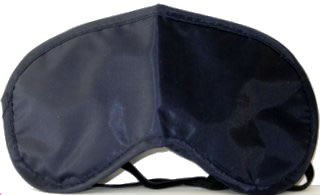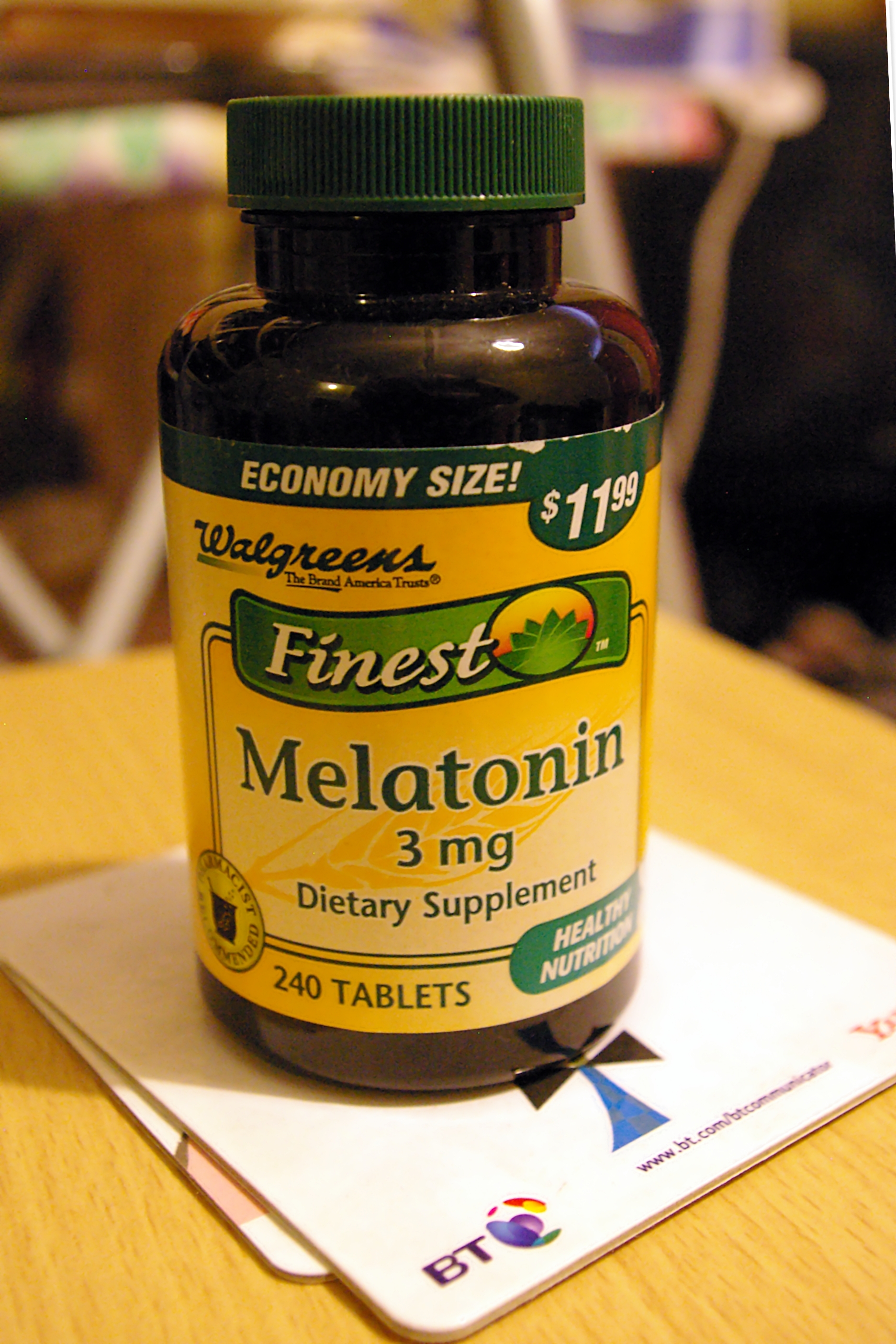|
Sleep Induction
Sleep induction is the deliberate effort to bring on sleep by various techniques or medicinal means, is practiced to lengthen periods of sleep, increase the effectiveness of sleep, and to reduce or prevent insomnia. Darkness and quiet Dim or dark surroundings with a peaceful, quiet sound level are conducive to sleep. Retiring to a bedroom, drawing the curtains to block out daylight and closing the door are common methods of achieving this. When this is not possible, such as on an airplane, other methods may be used, such as masks and earplugs for sleeping which airlines commonly issue to passengers for this purpose. Activities Guided imagery To relax and encourage sleep, a meditation in the form of guided imagery may be used. The stereotypical method is by counting sheep, imagining sheep jumping over a fence, while counting them. In most depictions of the activity, the person envisions an endless series of identical white sheep jumping over a fence, while counting the number ... [...More Info...] [...Related Items...] OR: [Wikipedia] [Google] [Baidu] |
Sleep
Sleep is a state of reduced mental and physical activity in which consciousness is altered and certain Sensory nervous system, sensory activity is inhibited. During sleep, there is a marked decrease in muscle activity and interactions with the surrounding environment. While sleep differs from wakefulness in terms of the ability to react to Stimulus (physiology), stimuli, it still involves active Human brain, brain patterns, making it more reactive than a coma or disorders of consciousness. Sleep occurs in sleep cycle, repeating periods, during which the body alternates between two distinct modes: rapid eye movement sleep (REM) and Non-rapid eye movement sleep, non-REM sleep. Although REM stands for "rapid eye movement", this mode of sleep has many other aspects, including virtual Rapid eye movement sleep#Muscle, paralysis of the body. Dreams are a succession of images, ideas, emotions, and sensations that usually occur involuntarily in the mind during certain stages of sleep. ... [...More Info...] [...Related Items...] OR: [Wikipedia] [Google] [Baidu] |
Neurohormone
A neurohormone is any hormone produced and released by neuroendocrine cells (also called neurosecretory cells) into the blood. By definition of being hormones, they are secreted into the circulation for systemic effect, but they can also have a role of neurotransmitter or other roles such as autocrine (self) or paracrine (local) messenger. The hypothalamus releasing hormones are neurohypophysial hormones in specialized hypothalamic neurons which extend to the median eminence and posterior pituitary. The adrenal medulla produces adrenomedullary hormones in chromaffin cells, cells which are very similar in structure to post-synaptic sympathetic neurons, even though they are not neurons they are derivatives of the neural crest. Enterochromaffin and enterochromaffin-like cells, both being enteroendocrine cells, are also considered neuroendocrine cells due to their structural and functional similarity to chromaffin cells, although they are not derivatives of the neural crest. Oth ... [...More Info...] [...Related Items...] OR: [Wikipedia] [Google] [Baidu] |
Ramelteon
Ramelteon, sold under the brand name Rozerem among others, is a melatonin agonist medication which is used in the treatment of insomnia. It is indicated specifically for the treatment of insomnia characterized by difficulties with sleep onset. It reduces the time taken to fall asleep, but the degree of clinical benefit is small. The medication is approved for long-term use. Ramelteon is taken oral administration, by mouth. Side effects of ramelteon include somnolence, dizziness, fatigue (medical), fatigue, nausea, exacerbated insomnia, and changes in hormone levels. Ramelteon is an structural analog, analogue of melatonin (medication), melatonin and is a binding selectivity, selective agonist of the melatonin receptor, melatonin MT1 receptor, MT1 and MT2 receptor, MT2 receptors. The elimination half-life, half-life and duration of action, duration of ramelteon are much longer than those of melatonin. Ramelteon is not a benzodiazepine or Z-drug and does not interact with GABA r ... [...More Info...] [...Related Items...] OR: [Wikipedia] [Google] [Baidu] |
Melatonin (medication)
Melatonin is a naturally occurring hormone produced in the brain that is also used as a dietary supplement and medication. As a hormone, melatonin is released by the pineal gland and is involved in sleep–wake cycles. As a supplement, it is often used for the short-term treatment of disrupted sleep patterns such as from jet lag or shift work, and is typically taken orally. There is evidence of its benefit for insomnia, but the evidence is not strong. A 2017 review found that sleep onset occurred six minutes faster with use on average, but found no change in total time asleep. Side effects from melatonin supplements are minimal at low doses for short durations (the studies reported that side effects occurred about equally for both melatonin and placebo). Side effects of melatonin are rare but may occur in 1 to 10 patients out of 1,000. They may include somnolence, headaches, nausea, diarrhea, abnormal dreams, irritability, restlessness, insomnia, anxiety, migraine, leth ... [...More Info...] [...Related Items...] OR: [Wikipedia] [Google] [Baidu] |
5-Hydroxytryptophan
5-Hydroxytryptophan (5-HTP), used medically as oxitriptan, is a naturally occurring amino acid and chemical precursor as well as a metabolic intermediate in the biosynthesis of the neurotransmitter serotonin. 5-HTP can be manufactured and used as a drug and supplement with the ''oxitriptan''. Brand names include Cincofarm, Levothym, Levotonine, Oxyfan, Telesol, Tript-OH, and Triptum. As a drug, it is used in the treatment of depression and for certain other indications. Production 5-HTP is produced from the amino acid tryptophan through the action of the enzyme tryptophan hydroxylase. Tryptophan hydroxylase is one of the biopterin-dependent aromatic amino acid hydroxylases. Production of 5-HTP is the rate-limiting step in 5-HT (serotonin) synthesis. 5-HTP is normally rapidly converted to 5-HT by amino acid decarboxylase. Metabolism 5-HTP is decarboxylated to serotonin (5-hydroxytryptamine or 5-HT) by the enzyme aromatic-L-amino-acid decarboxylase with the help of vita ... [...More Info...] [...Related Items...] OR: [Wikipedia] [Google] [Baidu] |
Tryptophan
Tryptophan (symbol Trp or W) is an α-amino acid that is used in the biosynthesis of proteins. Tryptophan contains an α-amino group, an α-carboxylic acid group, and a side chain indole, making it a polar molecule with a non-polar aromatic beta carbon substituent. Tryptophan is also a precursor to the neurotransmitter serotonin, the hormone melatonin, and vitamin B3 (niacin). It is encoded by the codon UGG. Like other amino acids, tryptophan is a zwitterion at physiological pH where the amino group is protonated (–; pKa = 9.39) and the carboxylic acid is deprotonated ( –COO−; pKa = 2.38). Humans and many animals cannot synthesize tryptophan: they need to obtain it through their diet, making it an essential amino acid. Tryptophan is named after the digestive enzymes trypsin, which were used in its first isolation from casein proteins. It was assigned the one-letter symbol W based on the double ring being visually suggestive to the bulky letter. Function ... [...More Info...] [...Related Items...] OR: [Wikipedia] [Google] [Baidu] |
Barbiturates
Barbiturates are a class of depressant drugs that are chemically derived from barbituric acid. They are effective when used medically as anxiolytics, hypnotics, and anticonvulsants, but have physical and psychological addiction potential as well as overdose potential among other possible adverse effects. They have been used recreationally for their anti-anxiety and sedative effects, and are thus controlled in most countries due to the risks associated with such use. Barbiturates have largely been replaced by benzodiazepines and nonbenzodiazepines ("Z-drugs") in routine medical practice, particularly in the treatment of anxiety disorders and insomnia, because of the significantly lower risk of overdose, and the lack of an antidote for barbiturate overdose. Despite this, barbiturates are still in use for various purposes: in general anesthesia, epilepsy, treatment of acute migraines or cluster headaches, acute tension headaches, euthanasia, capital punishment, and assisted ... [...More Info...] [...Related Items...] OR: [Wikipedia] [Google] [Baidu] |
Zopiclone
Zopiclone, sold under the brand name Imovane among others, is a nonbenzodiazepine, specifically a cyclopyrrolone, used to treat difficulty sleeping. Zopiclone is molecularly distinct from benzodiazepine drugs and is classed as a cyclopyrrolone. However, zopiclone increases the normal transmission of the neurotransmitter gamma-aminobutyric acid (GABA) in the central nervous system, via modulating GABAA receptors similarly to the way benzodiazepine drugs do inducing sedation but not with the anti-anxiety properties of the benzodiazepines. Zopiclone is a sedative. It works by causing a depression or tranquilization of the central nervous system. After prolonged use, the body can become accustomed to the effects of zopiclone. When the dose is then reduced or the drug is abruptly stopped, withdrawal symptoms may result. These can include a range of symptoms similar to those of benzodiazepine withdrawal. Although withdrawal symptoms from therapeutic doses of zopiclone and its isome ... [...More Info...] [...Related Items...] OR: [Wikipedia] [Google] [Baidu] |
Z-medicine
Nonbenzodiazepines (), sometimes referred to colloquially as Z-drugs (as many of their names begin with the letter "z"), are a class of psychoactive, depressant, sedative, hypnotic, anxiolytic drugs that are benzodiazepine-like in uses, such as for treating insomnia and anxiety. Nonbenzodiazepine pharmacodynamics are similar in mechanism of action to benzodiazepine drugs, acting as GABAA receptor positive allosteric modulators of the benzodiazepine site, and therefore exhibit similar benefits, side effects, and risks. However, nonbenzodiazepines have dissimilar or entirely different chemical structures, so are unrelated to benzodiazepines on a molecular level. Background Nonbenzodiazepines have demonstrated efficacy in treating sleep disorders. There is some limited evidence that suggests that tolerance to nonbenzodiazepines is slower to develop than with benzodiazepines. However, data is limited so no conclusions can be drawn. Data is also limited into the long-term effects of ... [...More Info...] [...Related Items...] OR: [Wikipedia] [Google] [Baidu] |
Temazepam
Temazepam, sold under the brand name Restoril among others, is a medication of the benzodiazepine class which is generally used to treat severe or debilitating insomnia. It is taken by mouth. Temazepam is rapidly absorbed, and significant hypnotic and anxiolytic effects begin in less than 30 minutes and can last for up to eight hours. Prescriptions for hypnotics such as temazepam have seen a dramatic decrease since 2010, while anxiolytics such as alprazolam, clonazepam, and lorazepam have increased or remained stable. Temazepam and similar hypnotics, such as triazolam (Halcion) are generally reserved for severe and debilitating insomnia. They have largely been replaced by z-drugs ( zopiclone, zolpidem) and atypical antidepressants ( trazodone, mirtazapine) as first line treatment for insomnia. Common side effects include drowsiness, motor and cognitive impairment, lethargy, confusion, euphoria, and dizziness. Serious side effects may include hallucinations, hypotension, res ... [...More Info...] [...Related Items...] OR: [Wikipedia] [Google] [Baidu] |
Benzodiazepine
Benzodiazepines (BZD, BDZ, BZs), colloquially known as "benzos", are a class of central nervous system (CNS) depressant, depressant drugs whose core chemical structure is the fusion of a benzene ring and a diazepine ring. They are prescribed to treat conditions such as anxiety disorders, insomnia, and seizures. The first benzodiazepine, chlordiazepoxide (Librium), was discovered accidentally by Leo Sternbach in 1955, and was made available in 1960 by Roche, Hoffmann–La Roche, which followed with the development of diazepam (Valium) three years later, in 1963. By 1977, benzodiazepines were the most prescribed medications globally; the introduction of selective serotonin reuptake inhibitors (SSRIs), among other factors, decreased rates of prescription, but they remain frequently used worldwide. Benzodiazepines are depressants that enhance the effect of the neurotransmitter gamma-Aminobutyric acid, gamma-aminobutyric acid (GABA) at the GABAA receptor, GABAA receptor, resulting ... [...More Info...] [...Related Items...] OR: [Wikipedia] [Google] [Baidu] |




